Whether you are a fun loving fan of this fuzzy holiday or irked by the commercialism, Valentine's Day has been celebrated in one form or another for centuries. A Christian holiday, the Feast of St. Valentine was first established by Pope Gelasius I in 496. Although little is generally known about the life of martyred St.Valentine, he was imprisoned under Roman Emperor, Claudius II for marrying and aiding Christian couples. Cladius II reigned from 268 until 270 and February 14th marks the date St. Valentine was buried on the Via Flamina north of Rome. In 1969, Pope Paul VI removed The Feast of St. Valentine from the General Roman Calendar of saints.
What to do...
Although celebrating Valentine’s Day with a pilgrimage to Via Flamina would be quite fitting and no doubt romantic, most of us are more apt to stay a bit closer to home. If Via Flamina isn’t on your list this year and you’re looking for something just a little bit different, we have just the spot right here in New York City. Standing at an impressive 102 stories and 1,453”, The Empire State Building offers breathtaking views of the entire city. Flood lights illuminate the building on Valentine's Day with a pink and red glow that can be seen from just about anywhere in the city. Each year, couples from all over compete to exchange their vows at The Empire State Building on Valentine’s Day, the only day of the year weddings are allowed. The contest generally begins in December and requires a two minute video pitching why you and your love should be one of the 14 lucky couples chosen to exchange your nuptials at this historic landmark.
Haven’t sent in your video?
Fret not, there are still many opportunities to share a special moment with your sweetheart. Every Thursday through Saturday from 10 p.m. to 1 a.m. a saxophonist adds to the romantic ambiance on the 86th Floor Observation Deck and may even grant special song requests. There are two observatories at The Empire State Building, the 86th floor observatory is outdoors and wraps around the building for 360 degree views of the city at 1,050', the observatory on the 102nd floor also wraps around the building, it is indoors and 1,250' above ground. Forget the mile high club, you can purchase your tickets for the 102nd observatory and automatically become a member of the "102 Club". To further your romantic mood you may also want to stop in at The Empire Room for a champagne toast!
(For any changes be sure to check out The Empire State Building’s official website: http://www.esbnyc.com/)
Empire State Building, Past and Present
This New York City Landmark is famous for much more than its dreamy scenes from the films, An Affair to Remember, Love Affair and Sleepless in Seattle, just to name a few. Completed in 1931, The Empire State Building was built in just two years with an astounding crew of 3,400 workers made up of mostly European immigrants, as well as Mohawk iron workers. Already under construction, The Chrylser Building and 40 Wall Street had their foundations shaken when The Empire State Building was completed. From 1919 until the 1930's New York went through an early construction boom, during this decade 16 out of 82 of the city's tallest buildings were built and architects were competing to churn out these architectural wonders. With the completion of The Empire State Building, the unofficial skyscraper race had been won and The Empire State Building became the tallest building in the world. Purpose built for office space, The Great Depression left much of the grand Art Deco building sparsely occupied in the 1930s. Despite its rocky beginnings, The Empire State Building emerges as quite the communication center with many notable tenants. Though no longer the tallest building in the world, The Empire State Building held its title as the tallest building in New York City for 41 years until the completion of The World Trade Center's North Tower in 1972. The Empire State Building has temporarily regained its title as the tallest building in New York City after the September 11th terrorist attacks but will take second place once again, after One World Trade center is completed.
Wattage & Wonder
One of the many special elements of the Empire State building are the festive lights that brighten up the NYC skyline. Always with a purpose, the top levels of the building are lit with different colors depending on the occasion or holiday. When Frank Sinatra died in 1998 the building was lit with blue lights in honor of "ol' blue eyes". The Empire State Building has a long tradition of using lighting for dramatic effect. The opening ceremony included President Herbert Hoover turning on the lights of the building with the push of a button from Washington, DC. While we can do nearly anything with a tap of our smart phones today, the concept gained much publicity in 1931.
From post to posting
Now we can even send a Valentine to our loved ones via phone, email or Facebook your beaux, quite different from the hand delivered paper and lace Valentines that became popular in England during the late 1700s. It wasn't until the postal service became more convenient and affordable that folks starting sending them, often times they were sent anonymously which led to some racier messages during the Victorian Era. Although the delivery methods may have changed over time, the Valentines themselves haven't changed all that much. Decorated with hearts and cupids that have become the iconic symbols of Valentine's Day, the cute cards we exchange today are very similar to the original Valentines created in England. Esther Howland of Massachusetts is credited with introducing these popular cards to the United States in the 1840s. Esther discovered Valentines while working in her father's stationary store and began making and selling them, by 1847 she began mass production. Many variations of Valentines were created in England including pop-ups and "mechanical" cards which had moving overlays. It wasn't until the 1950's that it became customary for those, hit with cupid's arrow, to exchange gifts. During the 1950's it became popular to give flowers or chocolates in addition to the traditional Valentines. By the 1980's the diamond industry got in on the action and began marketing jewelry as the perfect way to say, "I love you".
Canterbury to Cards
Although the history of Valentine's Day goes back centuries and there are many people to thank for the holiday we enjoy today, perhaps Hallmark & Co. owe a special thank you to the "Father of English Literature", Geoffrey Chaucer. In the High Middle Ages, Chaucer was the first person to associate courtly, or romantic love with the holiday, referencing St. Valentine in a poem. Chaucer lived from 1343 until 1400 in England, he is credited with developing English Literature at a time when the predominant literary languages were French and Latin. Today he is best known for the creation of The Canterbury Tales.
Happy Valentine's Day
Whether you decide to visit The Empire State Building, go out to dinner, enjoy a quiet evening at home or bah-humbug the whole affair, we hope you enjoy your Valentine's Day!
Heck, why not even make your own Valentines this year or perhaps read some Chaucer?
You know, for old time sake.
As always, feel free to share your comments, thoughts or ideas!
And if you've been missing out, don't forget to Like us on Facebook and Twitter for our daily post, "On This Day in Old New York", entries to "Old New York Speaks" and other updates!

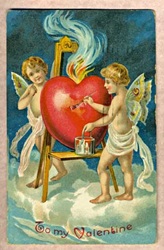

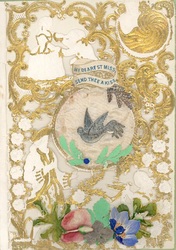


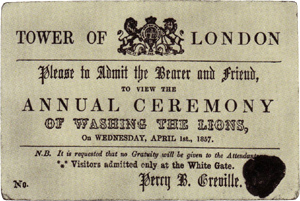
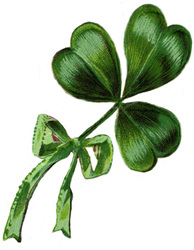
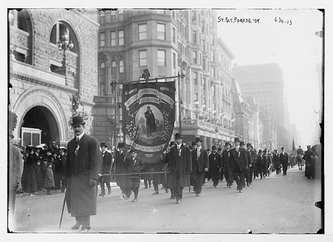
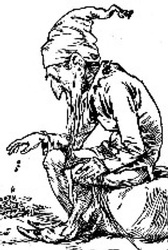
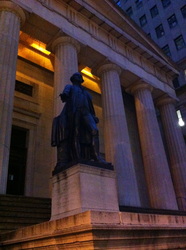
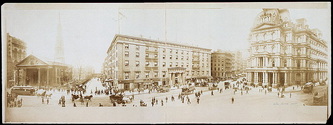
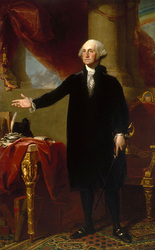
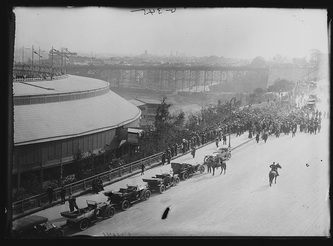
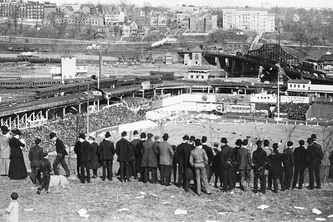

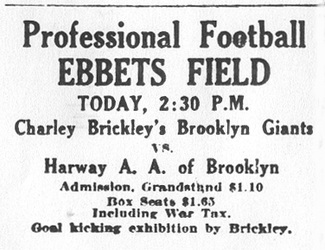
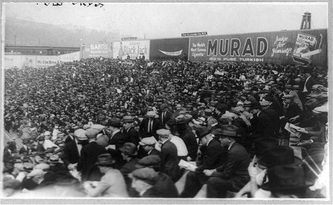
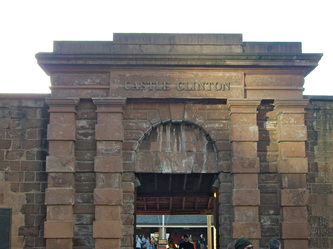
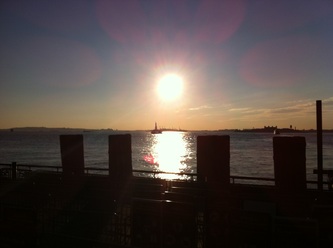
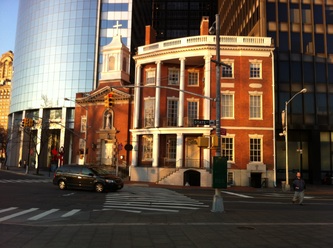
 RSS Feed
RSS Feed